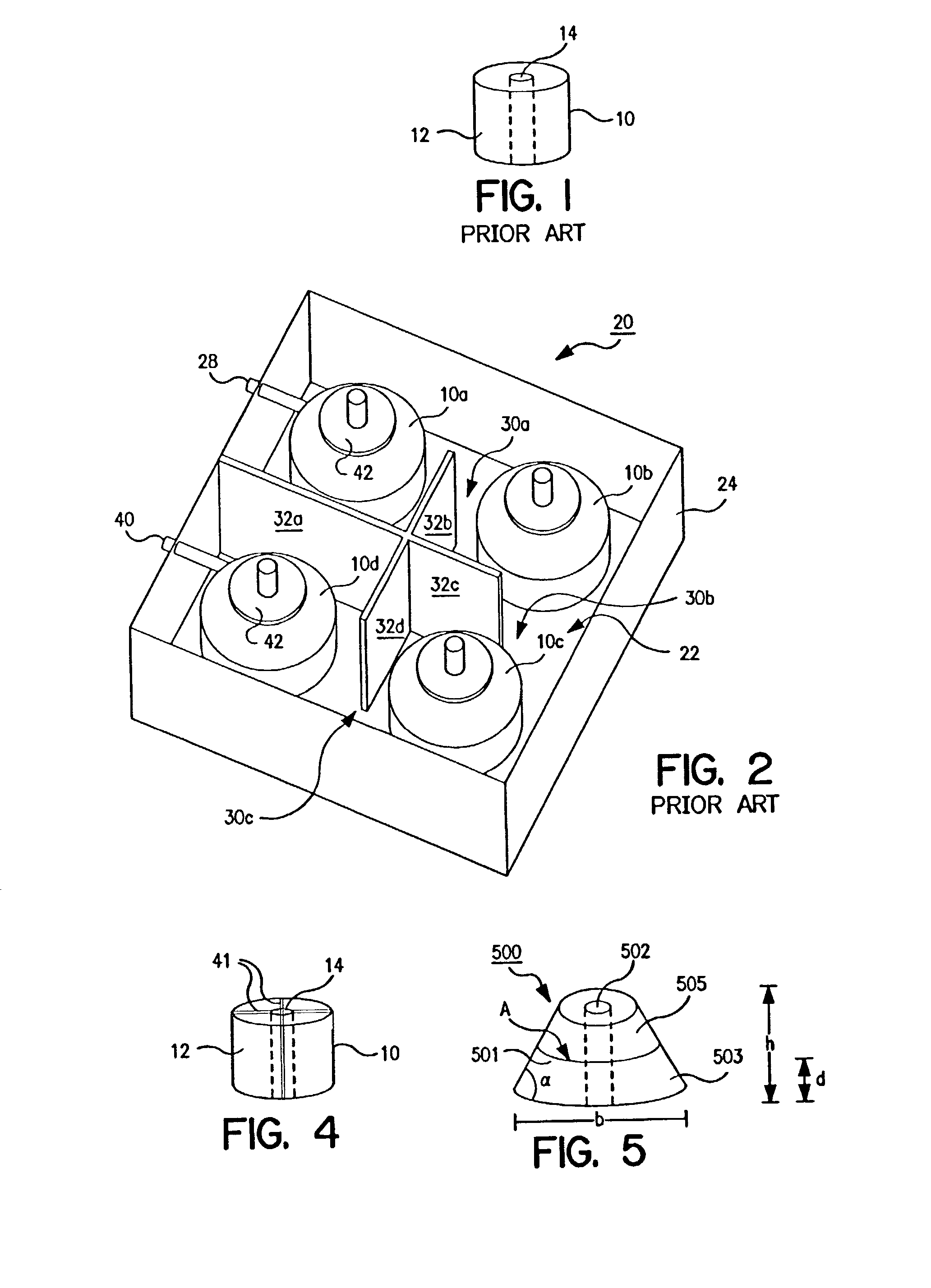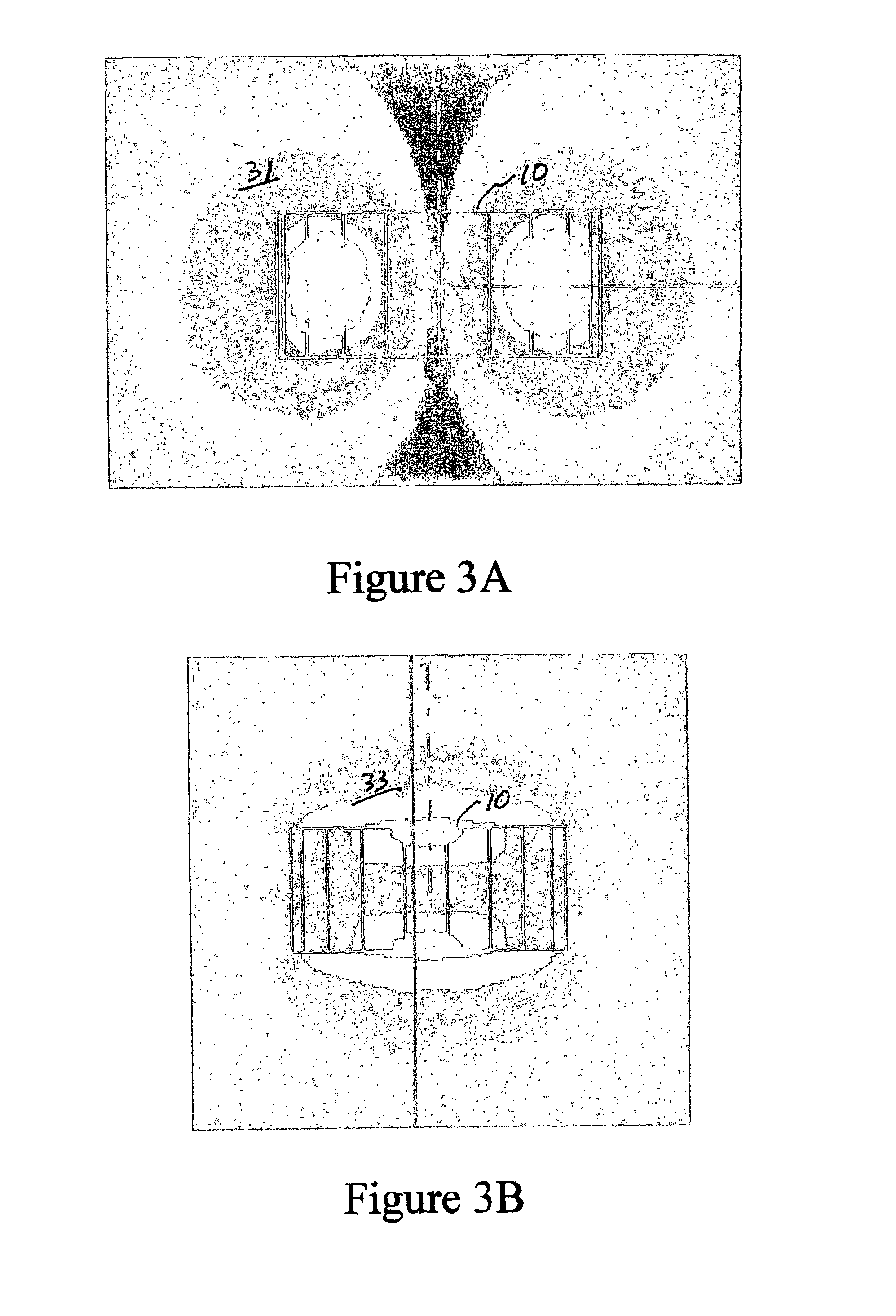Dielectric resonators and circuits made therefrom
a dielectric resonator and circuit technology, applied in the field of dielectric resonators, can solve the problems of interference, mode, all modes other than the mode of interest, and prior art dielectric resonator filters have limited frequency bandwidth performance, and achieve greater magnetic flux, strong magnetic field, and high quality factor per unit volume
- Summary
- Abstract
- Description
- Claims
- Application Information
AI Technical Summary
Benefits of technology
Problems solved by technology
Method used
Image
Examples
Embodiment Construction
[0057]FIG. 5 is a perspective view of a dielectric resonator in accordance with the present invention. As shown, the resonator 500 is formed in-the shape of a truncated cone 501 with a central longitudinal through hole 502. The conical shape physically separates the TE mode field from the H11 mode field. As in the prior art, the primary purpose of the through hole is to suppress the Transverse Magnetic (TM) mode, which is another dangerous, spurious mode. The TM mode is the only mode not affected by the conical shape of the resonator in accordance with the present invention. Its frequency may be near the TE mode frequency. Therefore, the through hole in the conical resonators in accordance with the present invention should be designed with the appropriate diameter to completely suppress the TM mode.
[0058]Referring to FIGS. 6A and 6B, the TE mode electric field 504FIG. 6A) tends to concentrate in the base 503 of the resonator because of the transversal components of the electric fiel...
PUM
 Login to View More
Login to View More Abstract
Description
Claims
Application Information
 Login to View More
Login to View More - R&D
- Intellectual Property
- Life Sciences
- Materials
- Tech Scout
- Unparalleled Data Quality
- Higher Quality Content
- 60% Fewer Hallucinations
Browse by: Latest US Patents, China's latest patents, Technical Efficacy Thesaurus, Application Domain, Technology Topic, Popular Technical Reports.
© 2025 PatSnap. All rights reserved.Legal|Privacy policy|Modern Slavery Act Transparency Statement|Sitemap|About US| Contact US: help@patsnap.com



